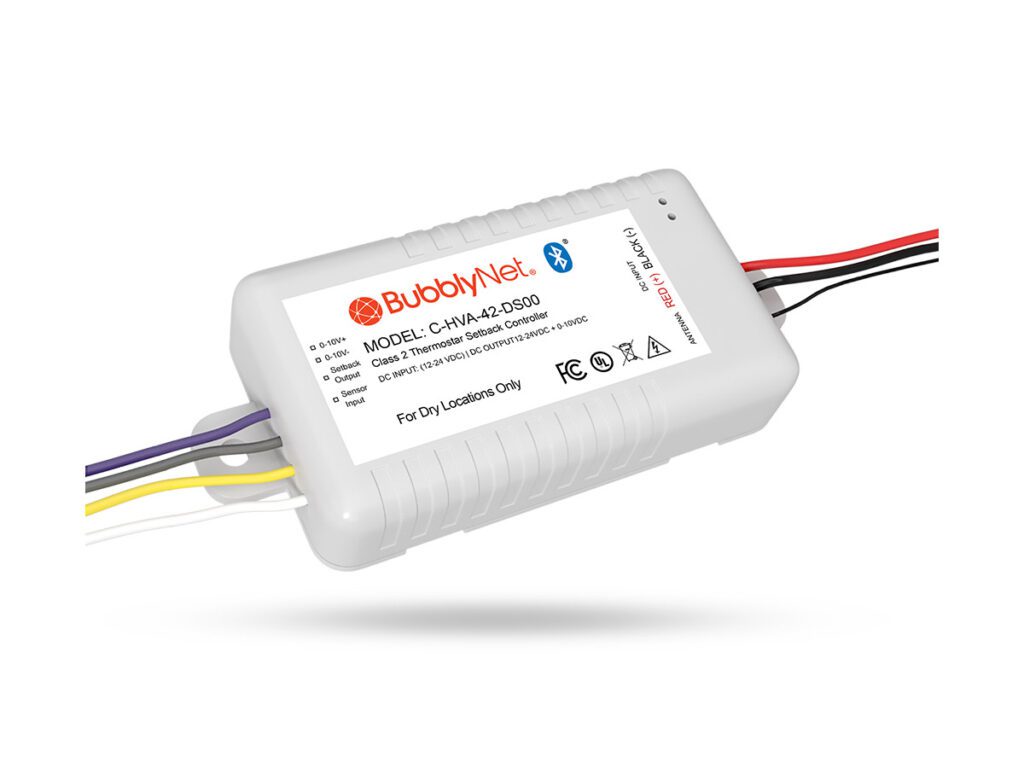The ULPLUS-TST-SBC is a Bluetooth NLC Wireless Thermostat Setback Controller that activates setback temperature on any thermostat with a CCI (Closed Contact Input).
Setback can be activated by vacancy sensing, a schedule or a demand response event to automatically adjust temperature, enhancing occupant well-being, energy efficiency, and overall productivity.
It connects via Bluetooth and can be accessed with the UltraLink+ web portal or mobile app for setup and configuration.


Product Information
TECHNICAL SPECS
FEATURES
LISTINGS
WORKS WITH
TECHNICAL SPECS
- Construction: White Polycarbonate.
- Input Voltage: 12-24V DC.
- Output Voltage: 12-24V DC.
- Sensor Input Voltage: 12-24V DC.
- Control Output: 0-10V (dimming), 100mA max.
- Operating Temperature Range: -20°C to +60°C (-4°F to +140°F).
- Power Supply: Optional.
- Dimensions: 3.25” x 1.5” x 0.25” (82.5 x 38 x 6.35 mm).
- Max Bluetooth Range: 200ft (60m) line of sight.
Range is highly dependent on the integration of fixtures, environment, and conditions. It is recommended to conduct testing for range accuracy.
FEATURES
- LED indicator status.
- Control over HVAC.
- Occcupied and unoccupied events.
- Scheduling.
- Demand response.
- Programmable settings can be set through the UltraLink+ mobile app.
- Advanced functionality available with the optional UltraLink+ Dashboard.
- Suitable for Indoor use.
- Mobile app available for iOS and Android devices.
LISTINGS
- FCC
- UL
- DLC
WORKS WITH
- UltraLink+ Controls.
- Honeywell VisionPRO 8000 (TH8321WF1001).
- Honeywell T6 Pro Z-Wave Thermostat.
- Johnson Controls TEC3000 Series Thermostat.
- Johnson Controls T2000 Series.
- Siemens RDG100 Series Thermostats.
- Siemens RDS120 Smart Thermostat.
- Schneider Electric SE8000 Series.
- Schneider Electric SmartX Living Space Thermostat.
- Trane XR524 Smart Thermostat.
- Trane ComfortLink II XL1050.
- Emerson Sensi Touch Wi-Fi Thermostat.
- Other thermostat brands and models that support setback input with CCI.